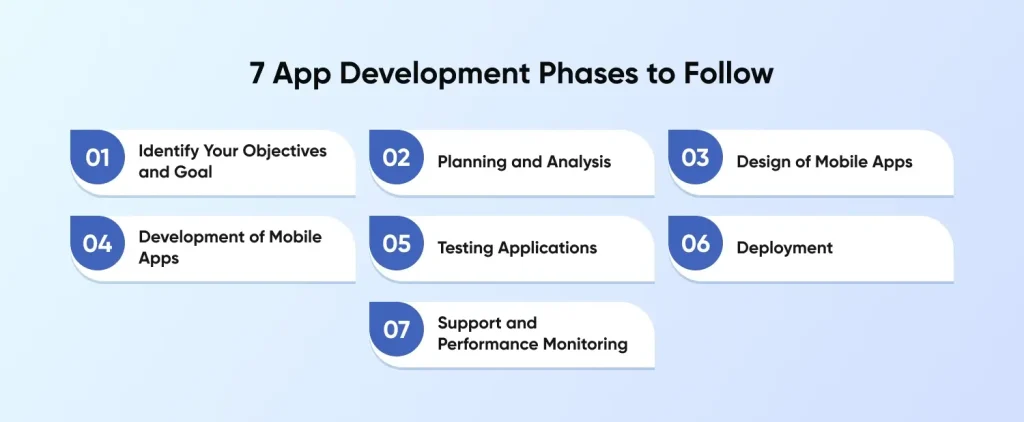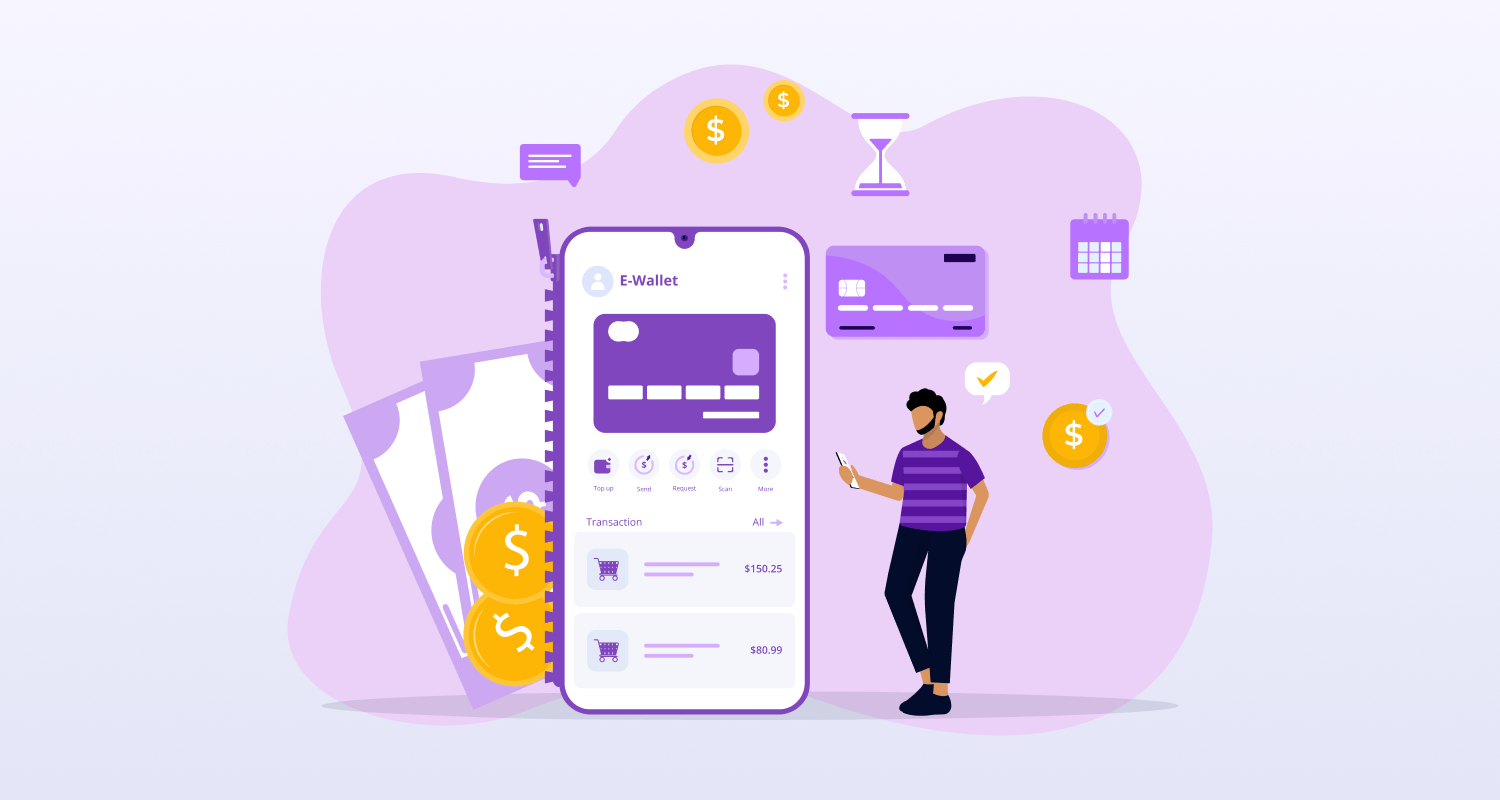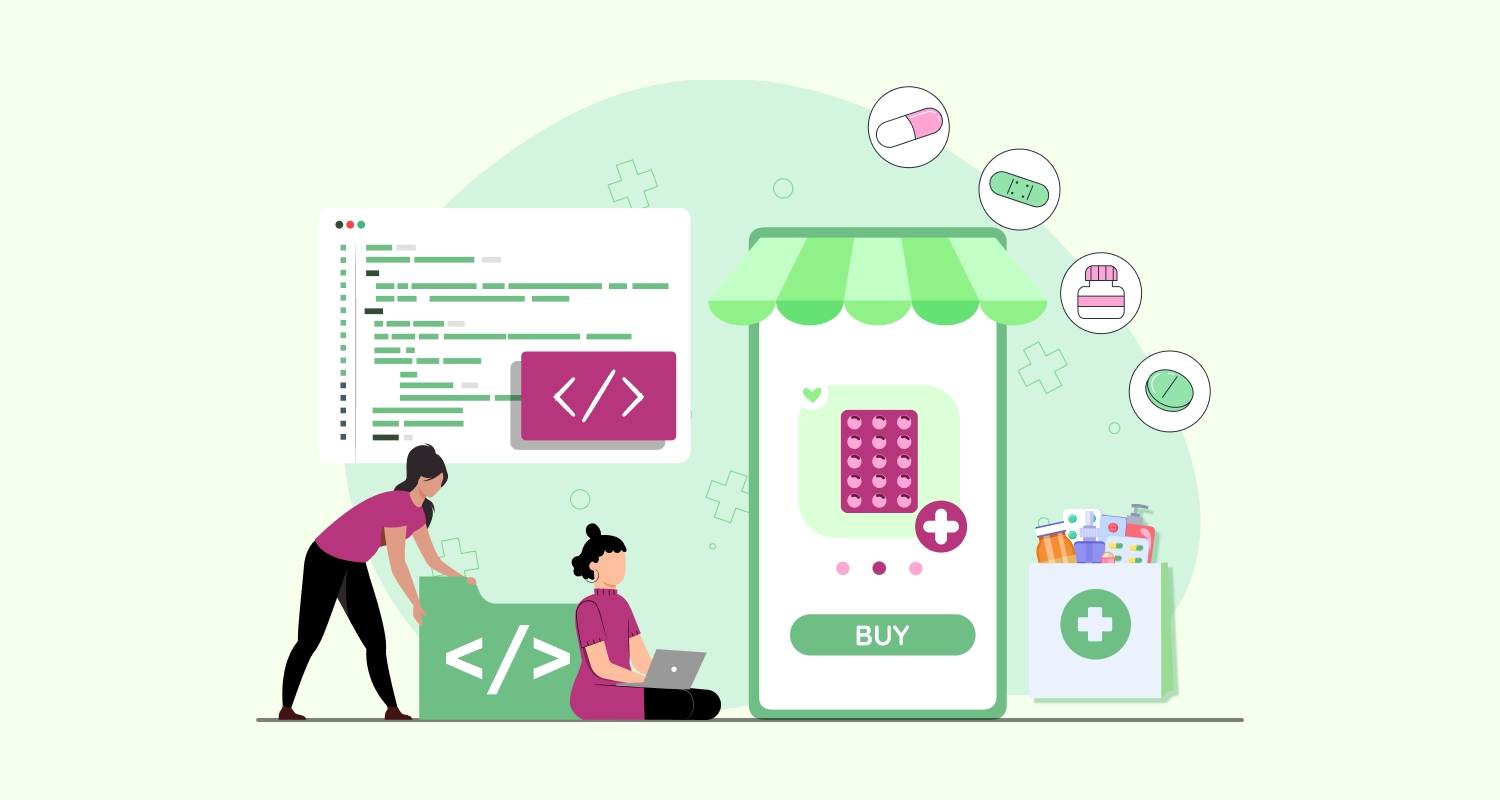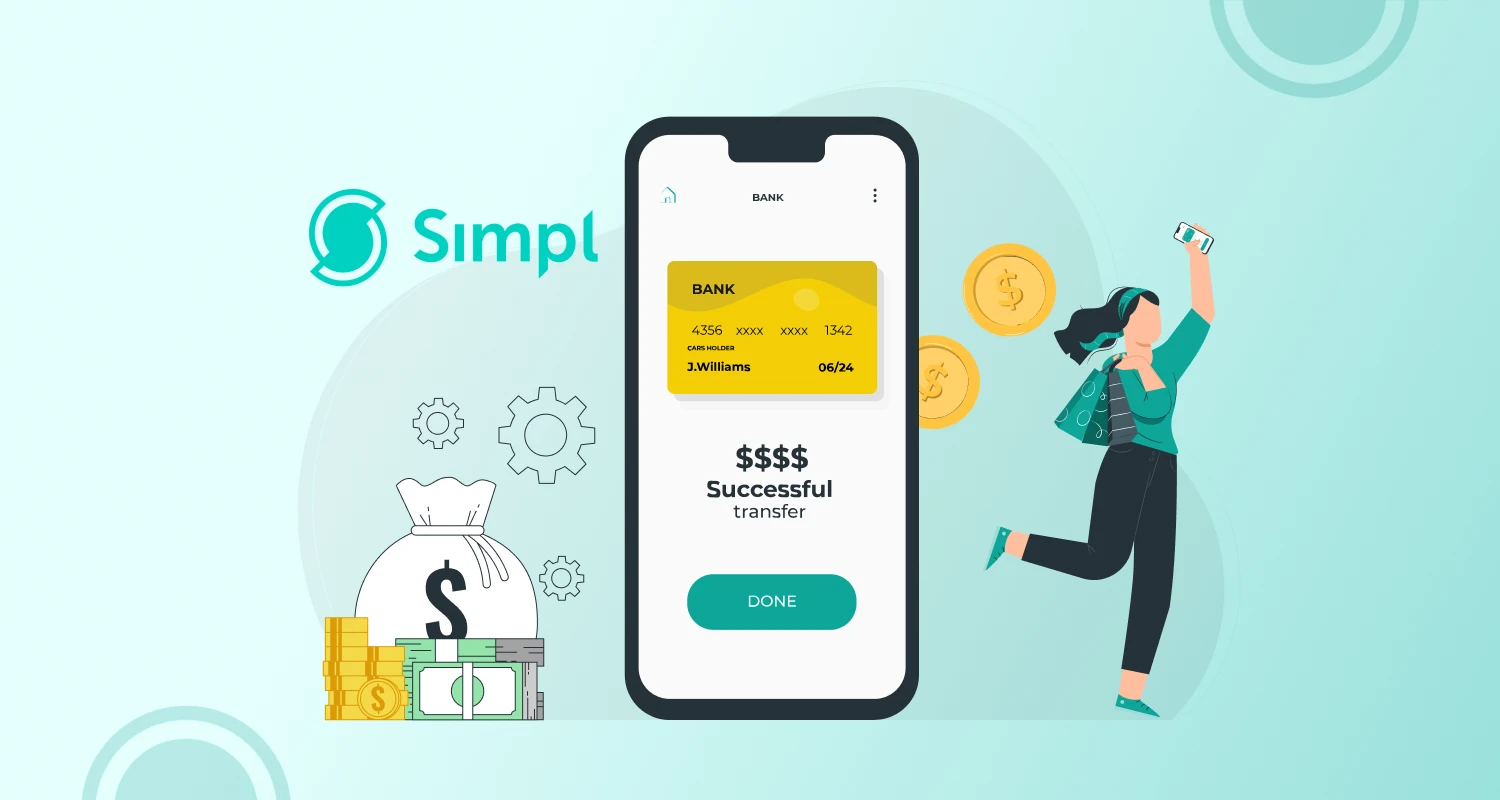The number of apps that are introduced to the market increases daily. Today, there are more mobile devices than people so the revenue of mobile applications is expected to reach $233 billion in the next two years. Given the statistics, it is obvious that any business now would like to look for enterprise app development.
Some companies hope to make the next Zoom or TikTok and concentrate on projects that include consumers and the money they potentially bring in. Others decide to invest in corporate solutions that can save costs and increase efficiencies to optimize internal processes.
In any event, if your company is interested in building a mobile app, it would be beneficial for you to understand the app development process. Let’s learn the stages of app development and share the right approach to build an app.
What Is the Application Development Process and Its Approach?
The process of developing mobile apps enables you to produce strong yet effective software for tablets, smartphones, and other mobile devices. Writing code and creating your application design are steps in the process. However, the ability of mobile applications to leverage a device’s intrinsic features sets them apart from traditional software development in a big way.
There are four approaches to be used in making your own apps. In addition, several variables, including project specifications, schedule constraints, and team dynamics, influence the choice of mobile app development frameworks or methodologies. Now let’s examine those:
Native App Development
Targeting any mobile platform, such as iOS or Android, is a specific step in the native app development process. The development team uses programming languages and tools appropriate to each platform, such as Objective C or Swift for iOS and Java or Kotlin for Android. This method provides better performance and ensures a smooth user experience because mobile applications are tailored solely to the hardware and software of that particular platform.
Native apps work well with other cutting-edge features like sensors and GPS and have full access to device features and APIs.
Hybrid App Development
Hybrid apps are made by combining native and online app technologies. Web technologies including HTML, JavaScript, and CSS are used in this type of mobile application development process. Mobile hybrid apps use a single codebase to function across several platforms.
Hybrid apps provide shorter development cycles than native apps and provide plugin access to native device functionalities. However, hybrid apps sometimes have performance limitations due to their complex user interfaces.
Cross-platform App Development
With very few changes, developers may create code that runs seamlessly on several platforms thanks to cross-platform app development. When creating cross-platform apps, frameworks and tools like Xamarin, Flutter, and React Native are used.
Progressive Web Applications
A PWA is a web-based application software, created with web technologies like HTML, CSS, and Javascript. It is a complete design to function on desktop and mobile devices individually on any compatible browser or platform.
Steps of Develop an App – 7 App Development Phases to Follow

“I want to develop an app”. When you go to a development company with your mobile app business plan, they understand your requirements and create app development phases to follow. Let’s study them.
1. Identify Your Objectives and Goal
Establish a clear grasp of the aims and objectives of your app before you begin the development process. Understand and discuss the concerns to gain valuable insights into it. As you gain a complete understanding of your target audience, take into account their tastes and demographics.
Ensure that the objectives that involve the design and features reflect the audience you are targeting. You can be sure that your app will meet their demands and establish a deep connection with them if you designed it with the user in mind. This will increase the likelihood of the app’s success as well as user pleasure.
2. Planning and Analysis
At this point, you have comprehensive knowledge about the market, possible users, and requirements for your mobile application. After analyzing all of this data, your team creates an exact development plan. Upon completion of this phase, a product plan will be provided. A successful tech stack selection is essential. It conserves money and resources while providing a competitive advantage. To save time and money, choose cross-platform technology taking into account complexity, and find an app developer as per his availability. This approach ensures efficient and high-quality development aligned to goals.
3. Design of Mobile Apps
Your team is now working on the mobile app’s UI/UX design. They consider the information architecture of your application, which includes the types of data and content that will be included and how they will be presented. The interaction between users is always the major focus.
Designers then create wireframes, which are conceptual drawings illustrating the visual hierarchy of your app design. Experts are working on a design system or style guide concurrently. These will contain all of the details on the overall design of your product, such as buttons, primary colors, fonts, and so on.
Subsequently, your designers create mockups, such as the design of an app’s screen and other images. Additionally, they guarantee that your product’s design is uniform. The development of application design prototypes is the final step.
4. Development of Mobile Apps
It’s time to move on to a crucial step of your mobile app development process now that the design phase is over. The back end and front end, which form the foundation of your ideal mobile app architecture for your development process, are the two key components of this stage.
Back-end
Making databases and server-side objects that are essential to your app’s functionality is part of the backend step. Your project team will choose appropriate programming languages and start coding the application at this phase. Database engines and a hosting environment will also be selected.
The scalability of your app in the future is mostly dependent on the backend. Working with skilled software developers is essential to ensuring your application can grow with your user base. They will help you through all the important stages of application development and make sure your system scales with ease.
Front-end
The mobile application’s front end is the one that users interact with the most. There are three main methods for constructing it:
Platform-Specific: These applications are made specifically for each mobile platform; as a result, the code is fully optimized for each platform rather than being shared between iOS and Android. This method might be more expensive, but the speed and responsiveness might make it worthwhile.

5. Testing Applications
After developing an app, testing is an essential next step. Delivering a high-quality solution requires making sure the developed solution is secure, stable, and bug-free. Before being released, your app should go through five crucial testing procedures.
Functionality testing is the first step in making sure everything in your application is operating as intended. Performance testing is also required to assess how well your software responds to a rise in the number of concurrent users.
Security testing is crucial, particularly for enterprise solutions used in highly regulated sectors such as healthcare and insurance apps on mobile devices. Data security is essential, and customers need to feel confident using consumer apps. As a result, it’s critical to confirm that your software complies with all security requirements and that your system is secure.
Furthermore, your software needs to continue working with newly released mobile devices and regularly updated operating systems. As a result, it needs to be evaluate under platform and device testing using a variety of gadgets or simulators.
Finally, testing your application with real end users before deployment is the last step in an extended assessment. Complete input is necessary for last-minute modifications and enhancements, whether conducted via focus groups or beta releases.
6. Deployment
The distribution strategy you choose for your app will rely on the platform it was created for when it’s time to launch it. The approach for launching the application is simple. You can choose your application store to deploy, whether Google Play Store or App Store.
Filling out multiple forms and going through a review procedure are required when submitting to either business. Because the software Store has a reputation for having rigorous standards, your iOS software needs to meet these standards to be approved. After the Android mobile app development process, you may apply for approval on the Google Play store. This procedure takes some time, and the product’s efficiency will determine whether it is accepted or denied.
7. Support and Performance Monitoring
Put on your analytical hat and start tracking your app’s performance after it goes online and consumers start downloading it steadily. Don’t undervalue this phase; it demands ongoing management and could take longer than creating the app.
Recall that creating a mobile app is only the beginning and that development never ends with deployment. To stay current with operating system updates, review policies, and performance benchmarks, mobile apps need to be updated regularly. Your investment won’t last very long without regular maintenance.
Whether you manage it yourself or hire mobile app developers, make sure your application gets the support it needs. For your mobile project, if you work with a software development business, the vendor will probably provide post-launch support services, which will relieve you of the maintenance load.
Conclusion
As you can see, creating mobile apps is a difficult but potentially rewarding process. You require such a product for your company given the market for mobile solutions’ explosive expansion and the pervasive usage of smartphones.
For a well-developed robust mobile app, the mobile app development process needs a team of full-stack developers, designers, project managers, QA teams, and business analysts to analyze the project and its importance for improvement.
However, if you are looking for a one-stop shop with the entire team, your search stops here. We can assist you because CMARIX – the best mobile app development company offers full-cycle mobile app design and end-to-end mobile app development process. Please get in touch with our team if our offer piques your interest.
Frequently Asked Questions
How Can I Select the Best Mobile App Development Company for My Project?
These are some of the top resources for locating developers of mobile apps.
Analyse Experience.
Examine the Portfolio of the Company.
Determine how well-versed they are in-app security.
Recognize their familiarity with emerging technologies.
Examine the company’s reputation.
Examine their application pricing structure.
Analyze the App Maintenance and Support Services.
How Much Does It Cost to Develop an Application?
A basic app’s development typically costs between 15000 USD and 25000 USD. Basic features like a simple dashboard, user profile log in system, and management user-friendly UI are included in the software. A medium-complex application can cost between 40000 USD and 75000 USD.
How Much Time Does It Take to Develop a Mobile Application?
The average mobile app development process takes approximately 2-4 months. For a few features to be implemented in the application, the process takes 6 months and if the app development involves a lot of complex features, the process may take up to 12 months or even more.
How Can I Maintain and Update My Mobile App After Its Launch?
Your go-to tactics for maintaining mobile apps Add new functionality. Adding new features over time is the most important aspect of an app maintenance tool set to Keep the app interesting for users.
Bug fixing
Check for compatibility.
Keep an eye on the licenses.
Revise the user interface.
Updates for security.
Perform performance evaluations regularly.







